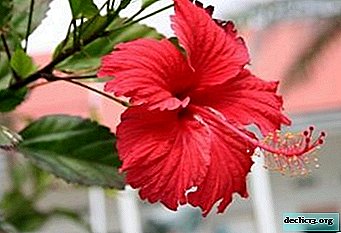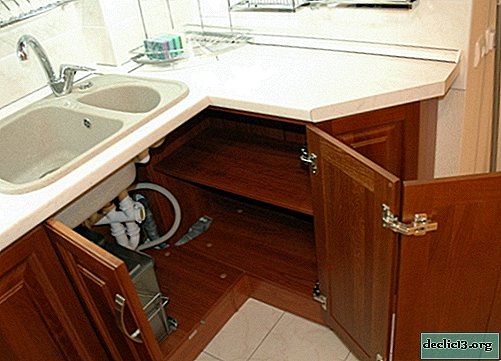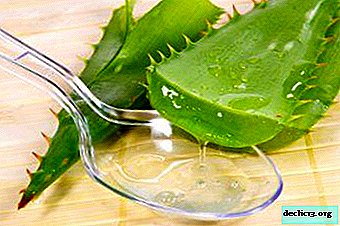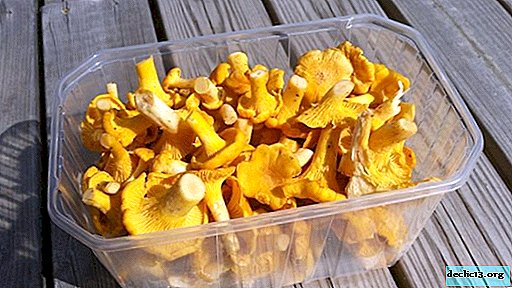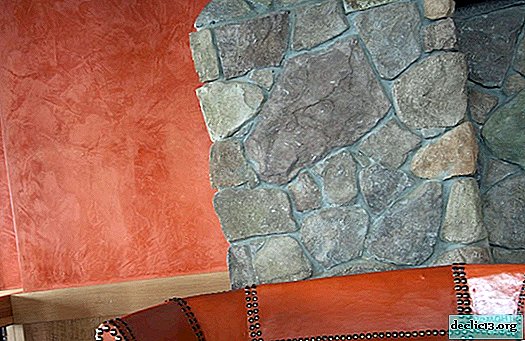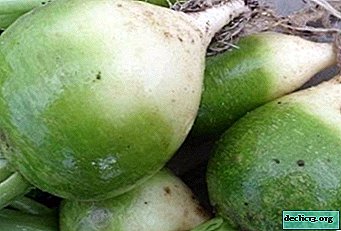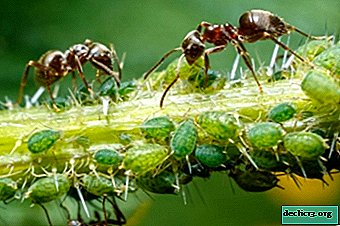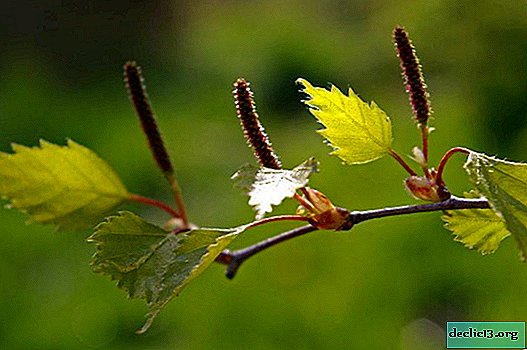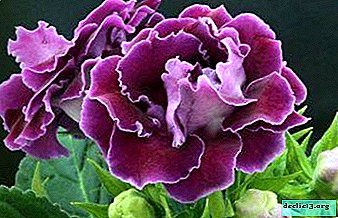All you need to know about ampel verbena: features of the species, conditions of maintenance and care, as well as photos of the plant

Variety of verbena ampelous is designed specifically for decorating balconies and loggias. It is distinguished by a motley hat of flowers, filigree leaves and absolute unpretentiousness.
The varieties of ampel verbena with bright red and scarlet flowers are especially popular, you can see them below.
Thus, from the article you will learn about ampel verbena, how to properly care for and propagate it, as well as transplant it. Get familiar with growing issues.
What is this plant?
Ampoule Verbena - an annual herbaceous flower of the Verbenov family. His homeland is the countries of the Mediterranean, Europe, North and South America. Natural varieties are also found in the Far East and Central Asia. There are about 250 varieties. Variety of verbena ampelous bred in the second half of the 20th century.
Ampelic verbena lacks a state of rest. Typically, the flowering period begins in late May. The flowering is plentiful, lasts until the beginning of October. The stems branch, hang down 50-60 cm. The crown width of an adult flower is 50 cm. The leaves are simple, dense in structure, covered with hairs, openwork.
The flowers have 5 petals, the flowers are small, the sepals are 1 - 1, 5 cm in diameter. The color scheme is varied - hybrid varieties have lavender, blue, purple, all shades of red, pink, and purple. You will learn about hybrid verbena here.
Important! Flowers are smaller in size than other types of verbena, but ampel verbena is distinguished by its generous flowering.Inflorescences are large, voluminous, collect up to 30 - 35 flowers. This variety is usually planted in hanging baskets and pots. Ampelic verbena grows rapidly, therefore, an annual transplant is required. The root is compact. The fruit has the shape of a small hazelnut of light brown or greenish-bog color. When ripe, the fruit breaks up into 4 parts.
Photo
Look at the photo of verbena from the form of ampelous



Popular varieties with red and scarlet blooms
Most often, red ampel verbena is grown as an annual plant. Florists breed these varieties by sowing seeds. Young seedlings are determined in hanging pots. Some varieties of red ampel verbena are considered to be especially popular.
"Tiara Red Impr"
Verbena with bright scarlet flowers, blooms profuselyforming a dense crown of numerous inflorescences. The variety is unpretentious, requires general rules for the care of hybrid varieties of ampel verbena.

"Estrella Voodoo Star"
The flowers are distinguished by colors - a mix of white and bright red tones, the flowers are large - up to 3-4 cm. The flower itself is miniature, the height of the adult stem is 25-30 cm. Flowering is generous, long. The tops of the shoots are directed upwards. Flowering begins in early summer, continues with proper care until the first autumn frosts.
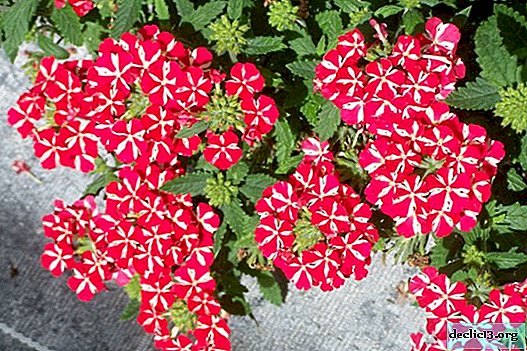
View Features
- Ampelic verbena is characterized by healing properties. Its flowers are used to treat abscesses, scrofula, and also to activate brain activity. The flower is widely used in cosmetology, verbena extract is a part of creams and face masks. About useful properties and contraindications to the use of verbena grass, read here.
- In the design is used as a decorative home flower. It is appreciated by flower growers for colorful blooming and beautiful, curly leafy greens.
- The variety is unpretentious, long bright flowering. It serves as an excellent honey plant, and is also a nutritious material for butterflies and caterpillars.
Conditions of detention
Lighting
Verbena ampelous loves light, grows poorly in the shade, flowering slows down. It can grow in the sun, on the south side of the house.
Air temperature
Ampoule verbena is grown every year as an annual, this grade does not tolerate large frosts. It tolerates small frosts to -3 - 4 ° C. Verbena ampelous is very thermophilic, moist, cold climate is poorly tolerated by the flower, it begins to hurt.
Advice! When sowing seeds, the air temperature should be at least 25 ° C. For germination, boxes with sowing are put in a warm place for several days.The optimum temperature for the growth and development of ampel verbena is 18 - 22 ° C.
The soil
 The substrate for this variety should be moderately moist, loose and not contain large doses of mineral salts. The soil should not contain a large amount of nitrogen, which contributes to the growth of shoots - stems and will inhibit the development of buds. The substrate should be regularly moistened; aridity of the soil provokes the appearance of flower diseases.
The substrate for this variety should be moderately moist, loose and not contain large doses of mineral salts. The soil should not contain a large amount of nitrogen, which contributes to the growth of shoots - stems and will inhibit the development of buds. The substrate should be regularly moistened; aridity of the soil provokes the appearance of flower diseases.
Mandatory additional loosening of the substrate before the growth of the bush. Also, to preserve a moist substrate, it is desirable to mulch the surface of the soil with rotten leaves.
Soil composition for ampel verbena:
- The drainage layer is a mixture of broken brick, expanded clay, crushed stone.
- Garden land - 2 hours
- Sand - 1 hour
Gardeners believe that for ampel verbena, fertile loam can be taken as the basis of soil.
The presence of drainage and holes in the pot for outflow of water prevents the root from becoming wet and decaying.
Care
Watering
Verbena ampelous prefers regular, but moderate watering. In the summer, it is recommended to water in the morning every other day. Young seedlings are watered daily in small doses.
Attention! Do not allow the substrate to dry out. With irregular watering, flowering occurs prematurely, quickly ends, seeds ripen prematurely.In the fall, watering should be reduced. Water the flower as necessary when drying the topsoil in pots.
Top dressing
Ampelic verbena is fertilized every 2 weeks with complex mineral fertilizers.
 A variety of ampel verbena requires more nutrition than other types of verbena.
A variety of ampel verbena requires more nutrition than other types of verbena.
It is required to strictly observe the dosage of top dressing, with excessive fertilizer, a green mass develops, but the formation of buds is delayed. In early spring, to build leaves, you should feed the flower with watering, with the addition of nitrogen fertilizers.
To form flower buds, in early May, fertilizers should be used:
- potassium;
- phosphorus;
- manganese.
Fertilizers for better absorption and uniform distribution are usually combined with watering.
Landing and transplanting
For planting verbena ampelous, you can grow seedlings from seeds. For beginner gardeners, seedlings are bought in special stores.
Immediately after planting, seedlings are abundantly watered for rooting. The flower absorbs the required amount of moisture. Excess water usually flows out through drainage holes. Water from pallets should be poured out immediately. Stagnant water is contraindicated in seedlings.
Transplantation is usually done in May, when constant heat is established. They choose a sunny place on the balcony or loggia, there they place boxes or hanging planters.
Important! In a pot with a capacity of 5 to 6 liters, 3 to 4 seedlings are planted. In large flowerpots up to 10 - 12 l, 6 to 7 young bushes are usually placed.Ampelic verbena is planted in open ground, especially in southern climates.
- Pre-dig a piece of land.
- For soil fertility, humus is applied - 3 - 4 kg per 1 sq. m and 3-4 tbsp. l any complex mineral fertilizers.
- They dig small holes, 2-3 cm larger than the size of an earthen coma of a seedling.
- Wells moisturize well before planting.
- A seedling is installed vertically, sprinkled with a substrate, slightly ramming it with a spatula.
In the garden or on the flower bed, 40 to 50 seedlings per square meter are planted. m. at a distance of 20 cm from each other. All details of planting and subsequent care of verbena you will find in a separate material.
Sowing seeds
 Ampelic verbena is well propagated by seeds. The procedure for sowing seeds is long and laborious, carried out in mid-March:
Ampelic verbena is well propagated by seeds. The procedure for sowing seeds is long and laborious, carried out in mid-March:
- In small boxes for seedlings, a drainage layer is laid.
- A special substrate is poured, preheated, in a small layer.
- The substrate is moistened with a small amount of water with a shallow watering can.
- Seeds are sown freely, do not deepen, they should be sprinkled with humus or substrate.
- On top of the box is covered with a transparent thick film or glass.
- Germination boxes are placed in a warmer place - the air temperature for seed germination should be at least 18 ° C.
- Mandatory daily ventilation of the greenhouse 2 - 3 times a day; collected condensate is removed.
- After 3 to 4 weeks with seed germination, the boxes must be rearranged in a bright, cool place.
- When 2 to 3 leaves appear, seedlings are dived into special cups, or immediately planted in pots.
- Fertilizers for the growth of seedlings are used 10 to 14 days after planting in a pot.
You can read more about growing verbena from seeds or cuttings in another article.
Breeding
Propagated verbena is propagated by cuttings. Typically, this method is used for hybrids that do not produce seeds. Verbena flower is brought for the winter in a cool room. Air temperature should be 5 - 10 ° С. Cutting of ampel verbena is carried out in February - early March.
The composition of the soil for cuttings - seedlings:
- peat;
- perlite;
- sand.
Algorithm:
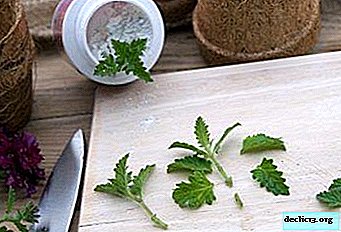 The finished substrate is heated and sprinkled in containers or boxes.
The finished substrate is heated and sprinkled in containers or boxes.- Cuttings of the upper shoots are cut.
- Each stalk should have at least 4 leaves.
- The lower leaves are cut from the cuttings.
- The cuttings are pre-soaked for a day in the root for better rooting.
- Planting stems are planted, deepening them by 1 cm.
- For the greenhouse effect, seedlings are covered with film or glass.
- Regular ventilation and watering is required.
- After a month, roots form.
Next, you can watch a video about the propagation of ampel verbena:
Growing problems
Florists note that ampel verbena is resistant to pests and diseases.
- The most common pest is an aphid; it is dangerous for flowers. To destroy the pest, spraying with tincture of tobacco and soap is used. For indoor flowers, you can use the drug Fufafon: 1 - 2 ml per 1 liter of water.
- If the substrate is raw, the crop can be affected by a black leg - a fungus that destroys seedlings at the very beginning of its growth. The stalk of a seedling is covered with black constrictions, decays and falls off.
To prevent the appearance of a spider mite, scabs should be treated with a solution of any insecticide.
In order to grow a beautiful curly bush of ampel verbena, you should take into account all the features of the growth of this variety and follow the rules for caring for it.

 The finished substrate is heated and sprinkled in containers or boxes.
The finished substrate is heated and sprinkled in containers or boxes.